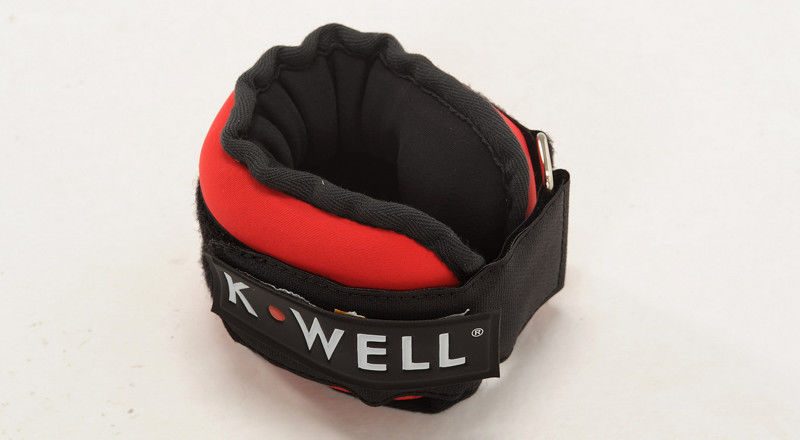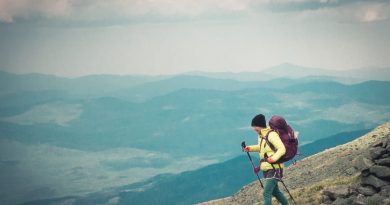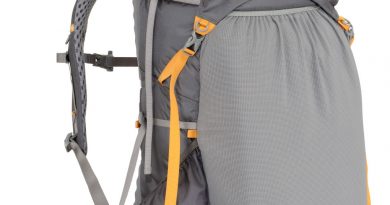How to Walk Better: Train Your Feet and Legs
Yes, there’s a better way to put one foot in front of the other. Improve your stride, trek farther, and end leg and back pain with our guide to the new science of healthy hiking.
Alone, a healthy foot strike and proper stride do not guarantee pain-free hiking. Weakness, instability, and tightness in the legs and hips can lead to problems as well. “Everybody is built differently, and gait will vary,” says Reed Ferber, PhD, a professor of kinesiology at the University of Calgary and director of the university’s Running Injury Clinic. Fitness, however, is universal. All hikers should strive to improve strength, balance, and flexibility to enjoy more comfortable miles.
What follows is a backpacking-specific training program designed to give hikers the physical tools they need to put good walking technique into practice. The program was compiled in consultation with physical therapists specializing in sports medicine, including Ferber and Brian Schmitz, a doctor of physical therapy and certified strength and conditioning specialist at DeRosa Physical Therapy in Flagstaff, Arizona.
Stretching
Think of your body like an engine. Muscles provide the power, but you need oil (flexibility) to keep everything running smoothly when you’re walking long miles. Maintain essential limberness year-round with these key moves.


Hips/Groin
Lunge on one leg, with front foot flat on the ground and with back leg straight and toes tucked under. Place your hands on the ground, on either side of foot, and press down with your arms (A). Hold for 10 seconds. Staying in lunge position, balance upper body on straightened arm opposite bent leg; twist torso toward bent leg and raise other arm toward the sky. Look up at hand (B). Hold for 10 seconds. Switch legs. Repeat three times.
Lower Back
Lie on the floor with legs extended straight and arms out to the sides, making a T shape. Bring knees toward chest. Keeping legs bent and together, lower them to one side, and let them rest on the floor while you turn your head in the opposite direction. Shoulders should remain flush against the floor at all times. Hold 10 seconds. Switch sides. Repeat three times.
Calves
Stand six inches away from a wall. Step one leg back three feet. Place hands flat against the wall and push in with your torso straight, front leg bent and back leg straight, shifting weight onto back foot and keeping heels on the ground. Hold for 10 seconds. (Bend back leg as well for a deeper stretch.) Switch legs. Repeat three times.
Quads
Standing with both feet flat on the ground, shift weight to right leg, and use left hand to pull your left leg behind you, against your butt. Stretch the right arm toward the sky and look up. Hold for 10 seconds. Switch sides and repeat three times.
IT Band

Sitting in a chair with your feet on the ground, place one foot on top of the opposite leg at the knee, making a triangle shape. Keep your back straight, lean forward from the hip, and press chest toward legs as far as possible. Hold for 20 to 30 seconds. Switch sides. Do this stretch lying on your back (pictured) to deepen it. Repeat three times on each side.
Feet/Legs

Sit on floor with your legs straight out in front and knees pointed toward the ceiling. Hinge forward from the hips with your back straight. Grab toes and pull toward your head, keeping feet flexed but legs straight, stretching foot, arches, and calves. Hold for 20 to 30 seconds. Repeat three times. (Tip: Can’t reach your toes with legs straight? Don’t bend your knees. Use a towel to pull on your feet while maintaining good form.)
Strength and Balance
Build the physical tools you need to sustain good walking form throughout a long trail day with a pack. Do these exercises—no gym required—three times per week, once your muscles and joints are warm.
Calf Raises

Why Strengthens calf and ankle muscles, which provide power during uphill hiking and improve stability on uneven terrain, preventing ankle sprains and Achilles tendonitis.
How Stand with feet pointing straight forward and shoulder width apart. Bend one leg behind so it forms a 90-degree right angle and raise up on the toes of the other foot (hold on to the back of a chair for balance if needed, but keep body weight on engaged foot). Hold in raised position for two seconds and slowly lower, bringing both feet back to the ground. Rest two seconds, then switch to the other leg. Start with two sets of 12 on each leg, and over a period of several weeks, gradually build up to two sets of 15 raises, then two sets of 20.
Advanced Work up to three sets without strain, then increase intensity by raising up on a one- or two-inch-tall platform, such as a gym stepper or a patio paving block.

Running Man
Why Trains legs (especially quads and hamstrings) and hips for the strength and balance you need to carry a backpack. It also increases overall body stability during the single-leg phase of your gait (when your weight is on one leg and the other is swinging forward).
How Slowly raise one leg and the opposite arm in right angles, with raised foot level with the opposite knee and hand of raised arm level with forehead. Hold pose for two seconds. Without letting raised leg touch the ground, slowly swing it back, tilting torso forward and bringing opposite arm backward. Bend opposite knee slightly for stability. Leg in back should be bent at a right angle, with thigh, torso, and neck forming a straight line that is diagonal to the ground. Hold pose for two seconds, then swing leg back to place both feet flat on the ground. Repeat five times on each side.
Advanced Do it on a pillow, or uneven ground with good traction.
Single-Leg Balance
Why Strengthens feet, legs, and hips, and improves balance when you’re striding with a pack.
How Barefooted, stand on one leg with hands on hips and raised leg bent at a 90-degree angle. Spread toes to help stabilize. Hold for 30 seconds, once on each side.
Advanced Stand on uneven ground.
Lateral Step
Why Improves balance and strengthens calves and thighs so lower legs can provide maximum stabilization during mid-phase (pronation/supination) of a healthy gait.
How Stand on a stable step that is one to two inches tall. Place hands on hips, with feet flat and pointing ahead. Slowly tilt your torso forward, bending at the hips while extending one leg straight out with flexed foot. Lower heel to the ground with the other leg bent as needed. Stick your butt out with spine straight. Don’t let your weighted knee drift inward or outward. Slowly return foot to neutral position on step. Do two more, then switch to other leg. Do five sets of three reps on each side, alternating left and right.
Advanced Gradually increase height of step, up to eight inches.
Hip Flexor
Why Strengthens hip muscles to improve their ability to function under a load and to take strain off the knees and ankles.
How Hang from a chin-up bar with your legs dangling straight down. Bend your knees and lift them toward your chest while crossing your knees to your left side. Lower back down over a three count. Lift your knees again, this time crossing them toward the right. Do three sets of eight.
Advanced Hold a basketball (or even harder, a medicine ball) between your knees.
Lunges

Why Improves quad strength and leg stability, which helps protect knees from strain on steep downhills with a backpack.
How Step forward (about three feet) with one leg, bending both knees to 90 degrees and toeing off the back foot. Keep feet, knees, and hips facing straight ahead. Perform 20 lunges on each side.
Advanced As you lunge, swing both arms straight up. Harder: Add a backpack.
Glutes
Why Strengthens gluteus maximus—the body’s largest muscle—to power you up hills and take strain off the quads and calves.
How Stand with feet pointing straight ahead and shoulder width apart. Resistance band* should be around both legs, above the ankles and lightly tensioned. Place hands on chair back and lean into chair, keeping spine straight, bending forward 90 degrees from the hips. With both knees straight, slowly raise one leg behind so it’s in line with your torso. Hold for two seconds, then slowly return leg. Repeat nine more times. Do three sets of 10 reps on each side.
Lunges
Why Improves quad strength and leg stability, which helps protect knees from strain on steep downhills with a backpack.
How Step forward (about three feet) with one leg, bending both knees to 90 degrees and toeing off the back foot. Keep feet, knees, and hips facing straight ahead. Perform 20 lunges on each side.
Advanced As you lunge, swing both arms straight up. Harder: Add a backpack.
Ankle
Why Improves mid-gait stability during supination and pronation, and strengthens lower leg muscles to prevent ankle sprains and overuse injuries to the foot.
How Sit on the ground, with one leg straight ahead and other leg pulled in toward the groin. Loop resistance band around the middle of foot of the straight leg. Keep the band tensioned by pulling with both hands toward torso. With foot flexed, slowly rotate forefoot inward without allowing leg to rotate (keep knee facing ceiling). Repeat 20 times, then rotate foot outward 20 times, then push foot forward 20 times. Do three sets with each foot.
Side Step
Why Works inner and outer thighs to strengthen muscles that don’t get used much during running or biking, but are critical for stability during backpacking.
How With legs spread shoulder width apart and resistance band just above the ankles and lightly tensioned, bend knees slightly and side step, engaging muscles to pull against resistance band. Keep band taut: Don’t bring feet together when stepping. Walk for 20 feet, then side step back to start (facing the same way). Repeat two times in each direction.
Hip Abductor
Why Strengthens hip muscles, improving your ability to maintain good form while carrying a pack, and taking strain off knees and ankles.
How Stand with knees bent, hips and back slightly flexed, feet pointing straight ahead and shoulder width apart. Resistance band should be around both legs, just above the ankles and lightly tensioned. Place one hand on a chair back for balance. Keeping both knees straight, slowly swing one leg back at a 45-degree angle, leading with the heel. Hold for two seconds, then slowly return the leg back to the floor. Repeat nine more times, then switch legs. Do three sets on each side. (Note: If you train at a gym, hip abductor/adductor machines are also good.)
Foot
Why You have more than 100 ligaments in each foot. This strengthens them, which helps prevent collapsing of the arch and improves shock absorption during foot strike.
How While sitting in a chair, scrunch a towel on the floor with your toes; try to use all five toes just as you would fingers. Repeat 10 times on each foot. Easy? Try picking up a marble.


Monster Walk
Why Improves balance and strength in thighs and hips, especially quads and gluteus medius (above quads), which helps with propulsion and strain of carrying pack weight.
How With legs spread shoulder width apart and resistance band just above the ankles and lightly tensioned, bend knees slightly and slowly walk forward by swinging legs out to create a semi-circle with each step. Walk for at least 20 feet, then walk backward to start. Repeat four times.
Plank Pose

Why Strengthens abdominal muscles, which helps keep torso stable and prevents hunching or leaning too far forward.
How Lie on your stomach. Keep legs, hips, and back straight and raise into a push-up position. Harder: Lower halfway, with arms flush against torso, elbows behind shoulders (pictured). Too hard? Rest weight on elbows/forearms. Hold up to 30 seconds. Repeat five times.
Side Plank

Why Improves balance and strengthens oblique (side) core muscles to increase stability under a load.
How From the plank pose, turn torso and stack feet. Keep body straight; balance on one arm and raise opposite arm toward the sky. Hold for 15 seconds. Repeat on other side.
Squats
Why Improves quad strength and leg stability, which helps protect knees by absorbing impact on descents. How Keep feet flat on the ground, shoulder width apart, and pointing straight ahead. With pelvis level and hands on hips, slowly bend knees and lower butt as if sitting in a chair. Straighten. Make sure your weight stays on your heels, and keep your knees behind your toes. Be careful not to “A-frame” knees (allowing feet and knees to flare out). Do 20 squats.
Advanced Through each up-down motion, swing one arm up as you lower, then down as you straighten. Repeat three arm swings: first above the side of the head, then overhead at a diagonal, then overhead to the front. Opposite hand is on hip. Avoid twisting your torso. Do 10 squats on each side.
Heads Up
It’s not fast (or easy), but this ancient method of hauling cargo builds a strong core.
Carrying a load on the skull puts weight as close to the spine as possible, says author Esther Gokhale, making the ancient technique highly efficient. She doesn’t recommend it for Westerners—it takes skill and neck strength—but says, “A small load can be very educational and even therapeutic.” It’s critical to engage the longus colli—essentially, flexing your neck. “Without this muscular support,” she says, “weight bearing leads to degeneration and arthritic changes in the spine.”
The article was originally seen at https://www.backpacker.com/skills/train-your-feet-and-legs
Originally posted 2018-04-13 17:28:01.




